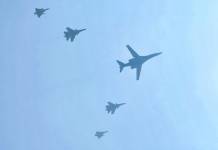The US is keen to develop a next-generation missile defense system to counter potential threats from nations such as North Korea and Iran.
The Pentagon has awarded separate contracts to aerospace giants Lockheed Martin and Northrop Grumman to develop the advanced missile defense system, according to reports.
The US move comes amid North Korea test-firing two short-range missiles, believed to be ballistic missiles, into the sea near Japan.
Reports suggest Washington has been looking to develop the technology which is capable of protecting the country from current ballistic missiles and other threats from nations like North Korea and Iran.
The Next Generation Interceptor (NGI) will search, intercept, and shoot down incoming enemy missiles mid-air. While the deal with Northrop Grumman is reported to be worth $3.9 billion, the deal with Lockheed Martin could be valued at up to $3.7 billion.

Over its lifetime, the NGI program could cost $10 billion to $12 billion. The NGI would be a part of the Ground-based Midcourse Defence (GMD) system, a network of radars, anti-ballistic missiles, and other equipment, which have been designed to protect the US from intercontinental ballistic missiles.
In 2019, the US had scrapped a contract with Boeing to build a ‘Kill Vehicle’, which is essentially the tip of an interceptor that would detach itself in space and kill an incoming warhead.
It was reported that the US had already spent a sum of $1.2 billion on the project, however, was forced to dump it after experiencing technical problems.
Boeing was also said to be a part of the competition to develop the new interceptor, however, it was knocked out of the competition on Tuesday (March 23).
According to experts, the US may have felt the necessity to develop the NGI as its rival Russia possesses the S-400 SAMs, considered the world’s most lethal defense system. The S-400 has been intricately designed to detect and destroy aircraft, cruise, and ballistic missiles. It can also eliminate ground-based installations.
The missile systems can engage targets at a range of up to 400 kilometers, reaching speeds up to Mach 6 or six times the speed of sound, at heights of up to 30 kilometers.
Follow EurAsian Times on Google News




